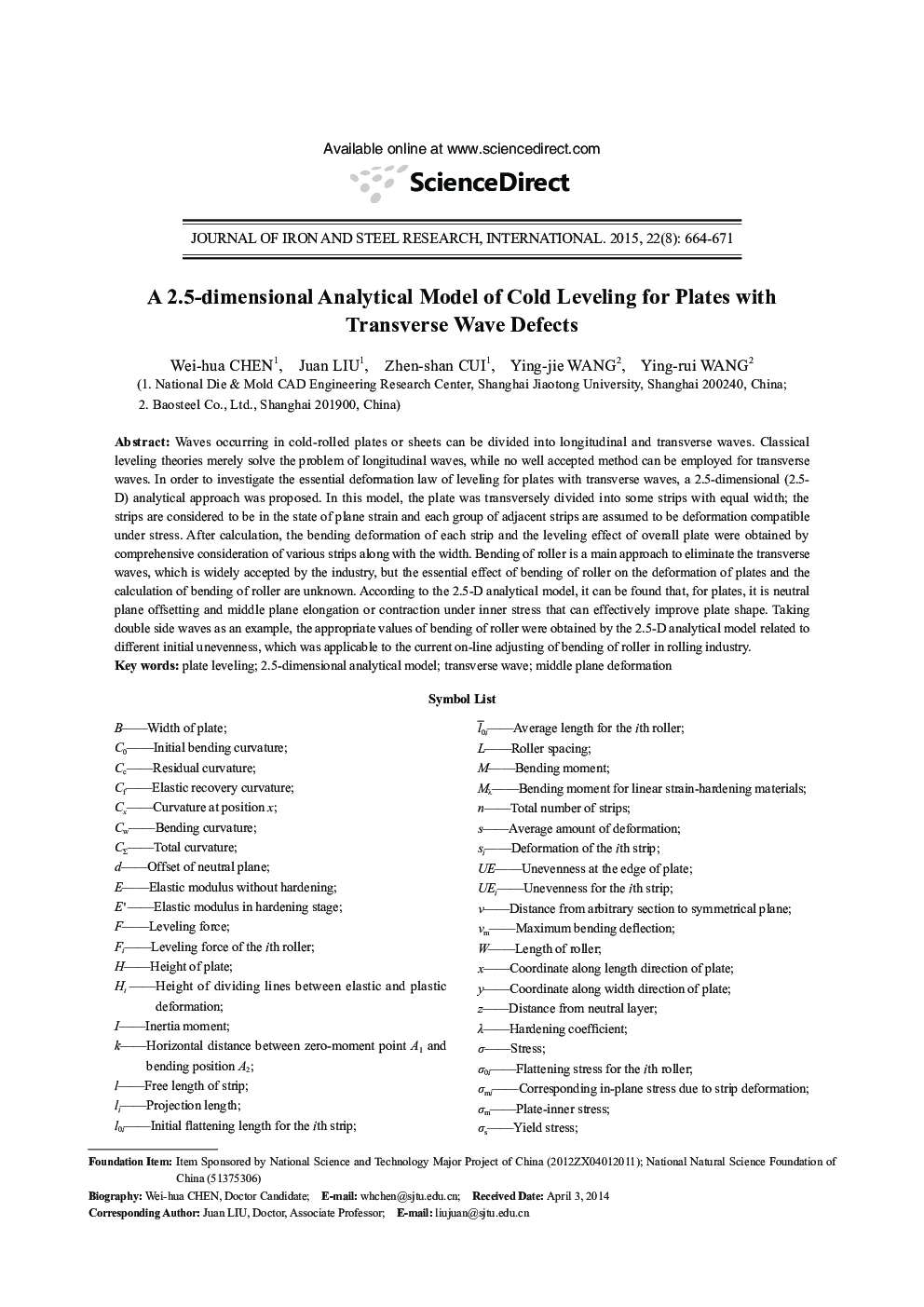| Article ID | Journal | Published Year | Pages | File Type |
|---|---|---|---|---|
| 1628250 | Journal of Iron and Steel Research, International | 2015 | 8 Pages |
Abstract
Waves occurring in cold-rolled plates or sheets can be divided into longitudinal and transverse waves. Classical leveling theories merely solve the problem of longitudinal waves, while no well accepted method can be employed for transverse waves. In order to investigate the essential deformation law of leveling for plates with transverse waves, a 2.5-dimensional (2.5-D) analytical approach was proposed. In this model, the plate was transversely divided into some strips with equal width; the strips are considered to be in the state of plane strain and each group of adjacent strips are assumed to be deformation compatible under stress. After calculation, the bending deformation of each strip and the leveling effect of overall plate were obtained by comprehensive consideration of various strips along with the width. Bending of roller is a main approach to eliminate the transverse waves, which is widely accepted by the industry, but the essential effect of bending of roller on the deformation of plates and the calculation of bending of roller are unknown. According to the 2.5-D analytical model, it can be found that, for plates, it is neutral plane offsetting and middle plane elongation or contraction under inner stress that can effectively improve plate shape. Taking double side waves as an example, the appropriate values of bending of roller were obtained by the 2.5-D analytical model related to different initial unevenness, which was applicable to the current on-line adjusting of bending of roller in rolling industry.
Keywords
Related Topics
Physical Sciences and Engineering
Materials Science
Metals and Alloys
Authors
Wei-hua CHEN, Juan LIU, Zhen-shan CUI, Ying-jie WANG, Ying-rui WANG,
